Great Grimsby Day is a time to celebrate all things great about the town.
In the Town Hall, there are a number of fascinating paintings and objects, acting as a window into the history of our beloved town.
From the mural depicting the Great Grimsby hunt, to the stained glass windows in the Council Chambers, the building is full of knowledge, hidden in plain sight.
Inside the Assembly Room, a large panoramic painting sits above the stage depicting a royal family hunting for boar in the woods.
It’s believed the royal family in question may be King John who is thought to have often hunted in Bradley Woods during his reign from 1199-1216.
Boar hunting is also popularly thought to be the origins for the town’s crest with the three boar’s heads and chevrons, alluding to the rights of the Mayor and the Aldermen to hunt in Bradley Woods.
The chevrons have also appeared on a number of other seals, including the mayoral medieval seal; the crest of the de Grymesby family and MP for Grimsby William Broxholme who was elected in 1762 whose crest had chevrons separating three badger heads.
Other treasures hiding in plain sight include the decorative stained glass windows in the Council Chambers detailing a number of links the town has across the world:
Askew (Ayscough) – This window relates to the Ayscough family who lived in Stallingborough in the 15th century. Christopher Ayscough was mayor of Grimsby in 1511 and Sir William Ayscough represented Grimsby in the Reformation Parliament, which sat from 1529 to 1536 during the reign of Henry VIII.
Tennyson d’Eyncourt – The windows origins lie with George Tennyson of Grimsby, one of the most active members of the Grimsby Haven Company who began development of the docks in the late 1700s. His son, Charles Tennyson Deyncourt added the latter to the family name as instructed to do so in his father’s will. He would go on to be MP for Grimsby from 1818 to 1826.
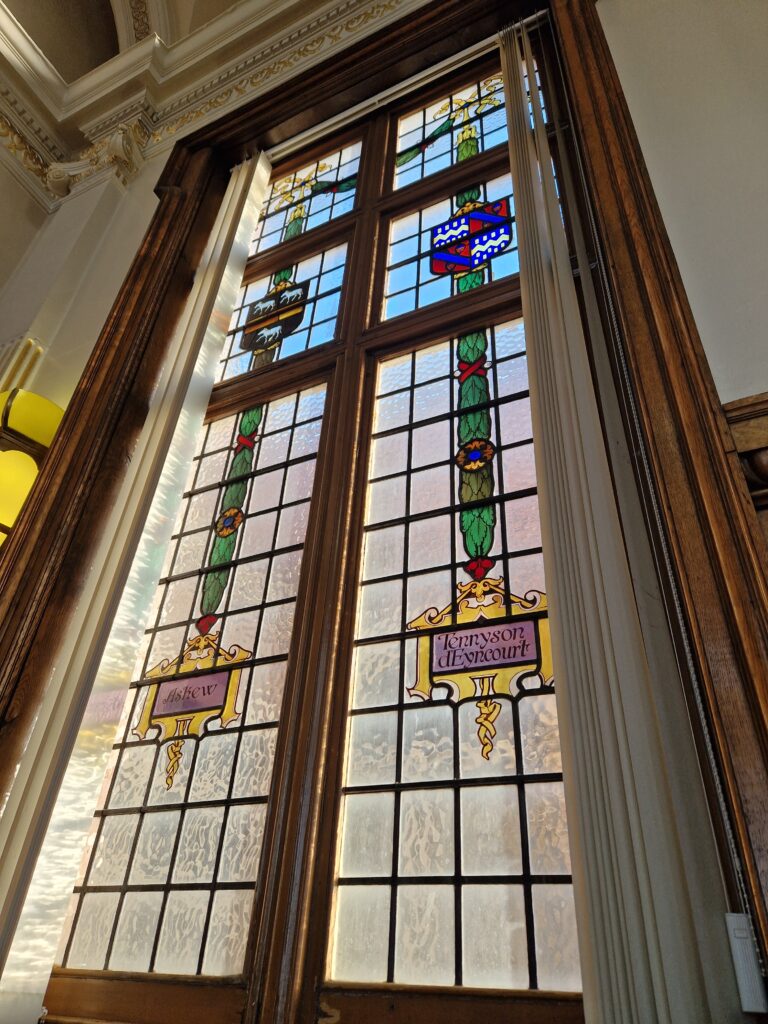
- Grant Thorold – Named after Alexander William Thorold Grant Thorold who gave his name to the public park. The family’s estate covered a large amount of Grimsby and Cleethorpes with the window representing the Weelsby area.
- Heneage – The Heneage family first became prominent when Sir Thomas Heneage (1480-1553) became chief gentleman of the Privvy Chamber to Henry VIII. This was someone who was a noble servant of the crown and would meet the king in private. John Heneage represented Grimsby in the Reformation Parliament and the family gave the town it’s first park, People’s Park in 1883.
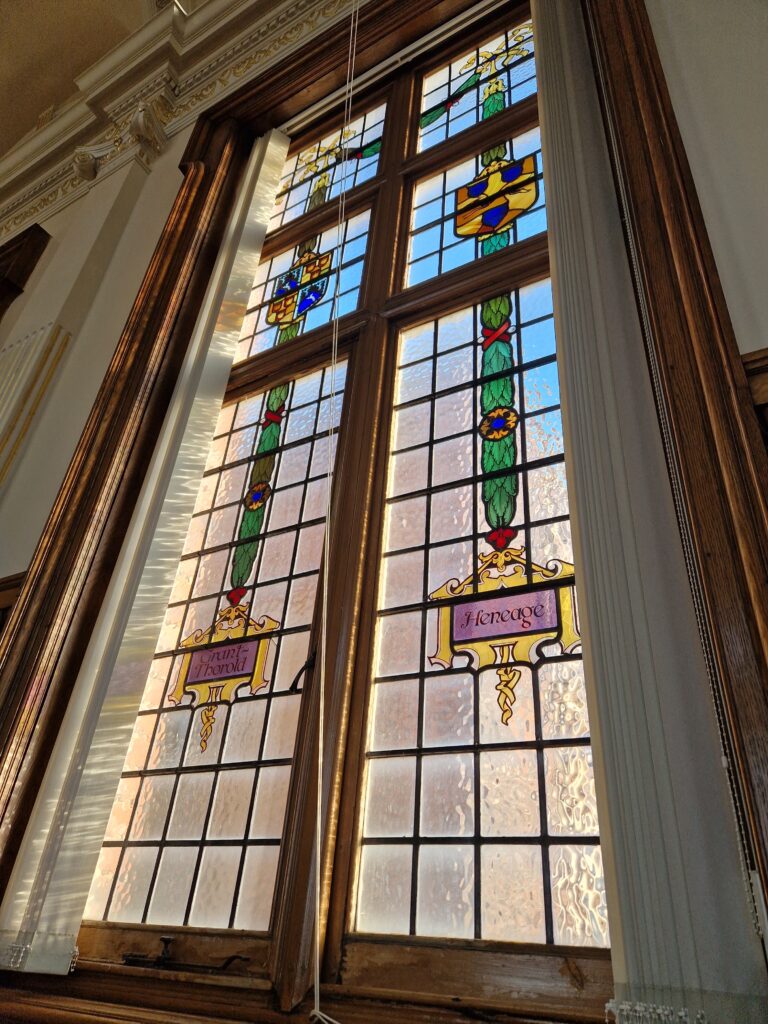
- Holles – The family first came to the town in 1547 through Sir Gervase Holles, who fought against the Spanish Armada in 1588. His son, Frescheville Holles, married Elizabeth Kingston at St. James Minster in 1627. Their son, also called Gervase, was mayor of Grimsby in 1636 and 1638, before becoming MP in 1640. During the Civil War, he fought for the Royalists at battles such as Edgehill and Newark and later became mayor again in 1669.
- Neville – The window is inspired by Ralph Neville, 3rd Earl of Westmorland, who told the Mayor of Grimsby who would be the town’s members of Parliament in the 1400s on more than one occasion.
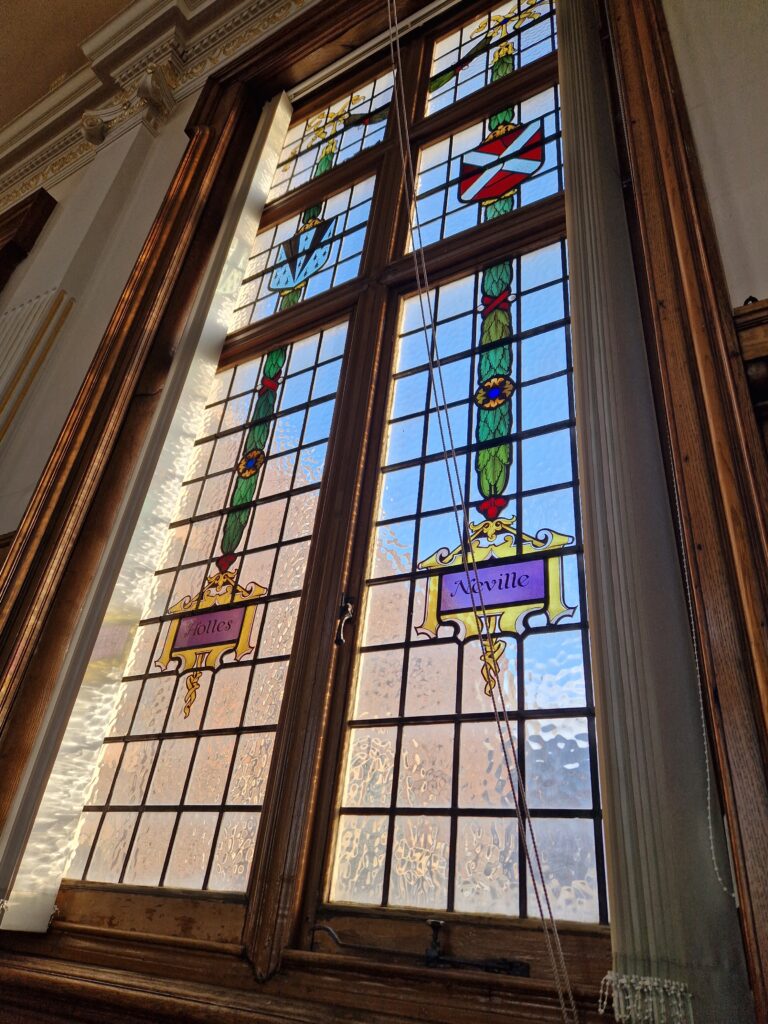
- Pelham – The family were MPs of Grimsby throughout the 1600 and 1700s. Henry Pelham represented the town in 1621, 1624, 1625, 1626 and 1628. George Pelham was elected High Steward, a role which originally provided considerable local power, but became largely ceremonial by the time he was elected in 1678. The family also produced the first Earl of Yarborough, Charles Pelham, in 1837.
- Whitgift – the connection between the Whitgift name and Grimsby began when Henry Whitgift of Yorkshire married Anne Dynewell of Grimsby. His sixth son, John, was born in the town in around 1530 and would go on to be Archbishop of Canterbury from 1583 until his death in 1604.
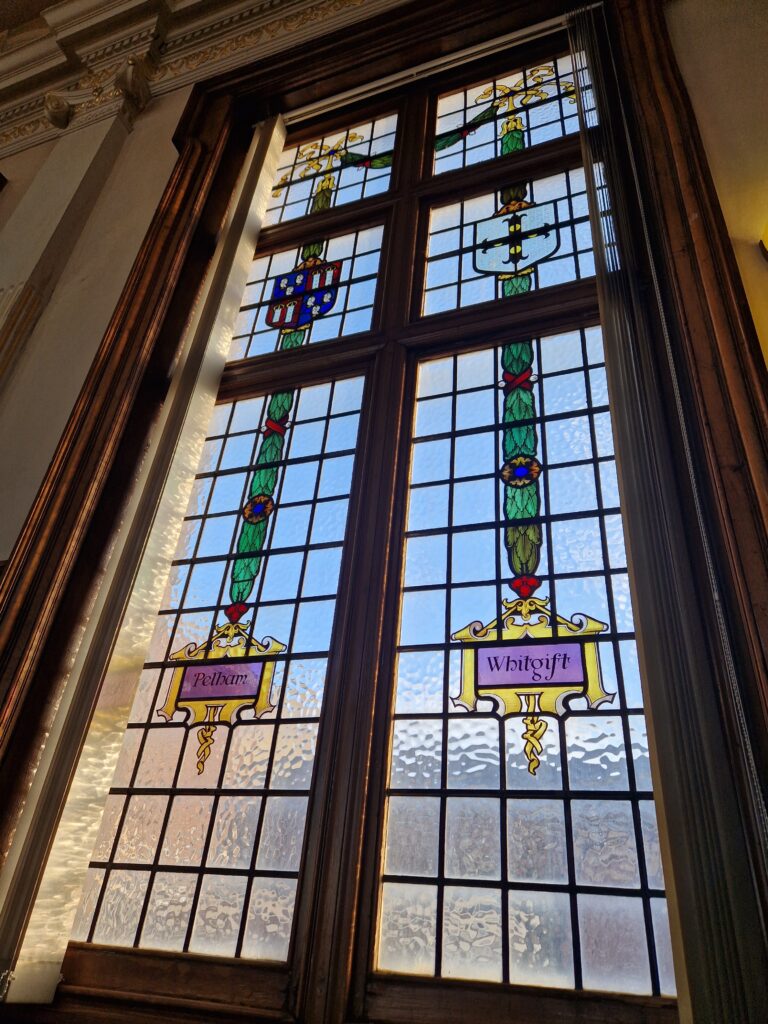
- Manchester, Sheffield and Lincolnshire Railway – The company, of which the Earl of Yarborough was chairman, acquired the Haven Company’s assets to help expand the dock in the early 1800s. The original aim was to make Grimsby their Eastern Terminus with work beginning on a new dock in 1846. The company built the railway into Grimsby in 1848, opening the dock four years later in 1852.
- Dieppe – This window signifies the link between Grimsby and the French fishing port. Henri Josse came from Dieppe to Grimsby as a refugee in the late 1800s and rose to MP for the town in 1892.
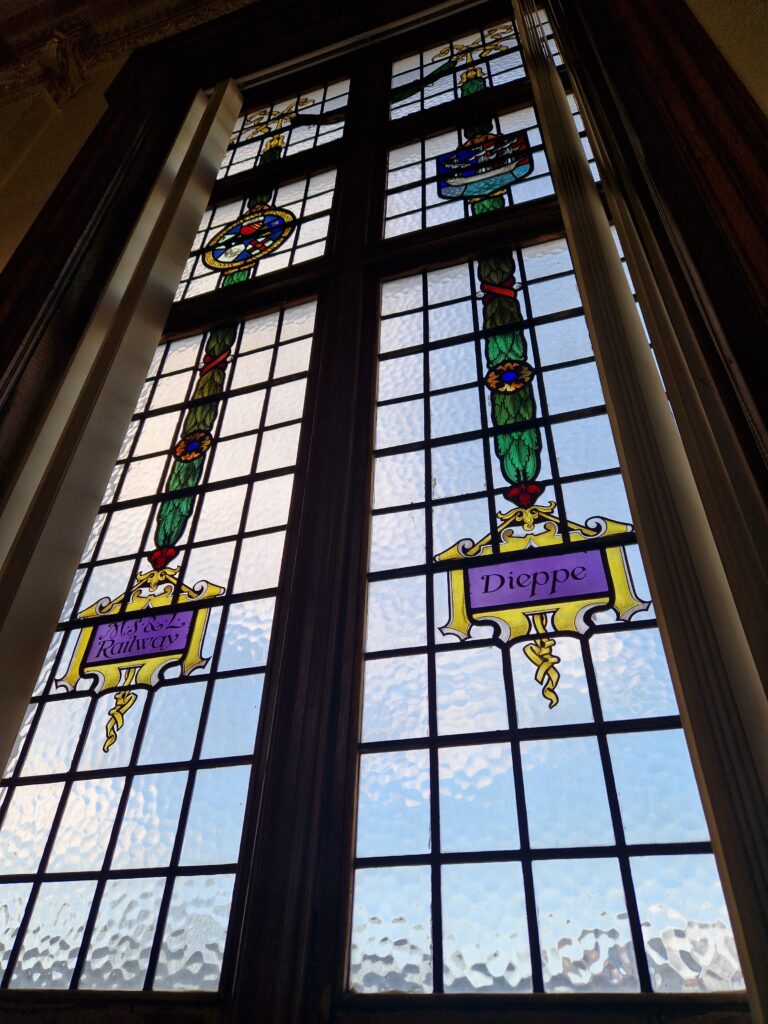
- No. 12 (B) Squadron, Royal Air Force – During the Second World War, they were stationed in Binbrook and were granted marching freedom of the borough, which was the first of its kind to a regular squadron of the RAF.
- Seal of Wellow Abbey – Also known as Grimsby Abbey, it was founded by Henry I in around 1110. The seal depicts St Augustine of Hippo, a renowned writer, and St Olaf, the king of Norway, to illustrate the town’s links with Scandinavia.
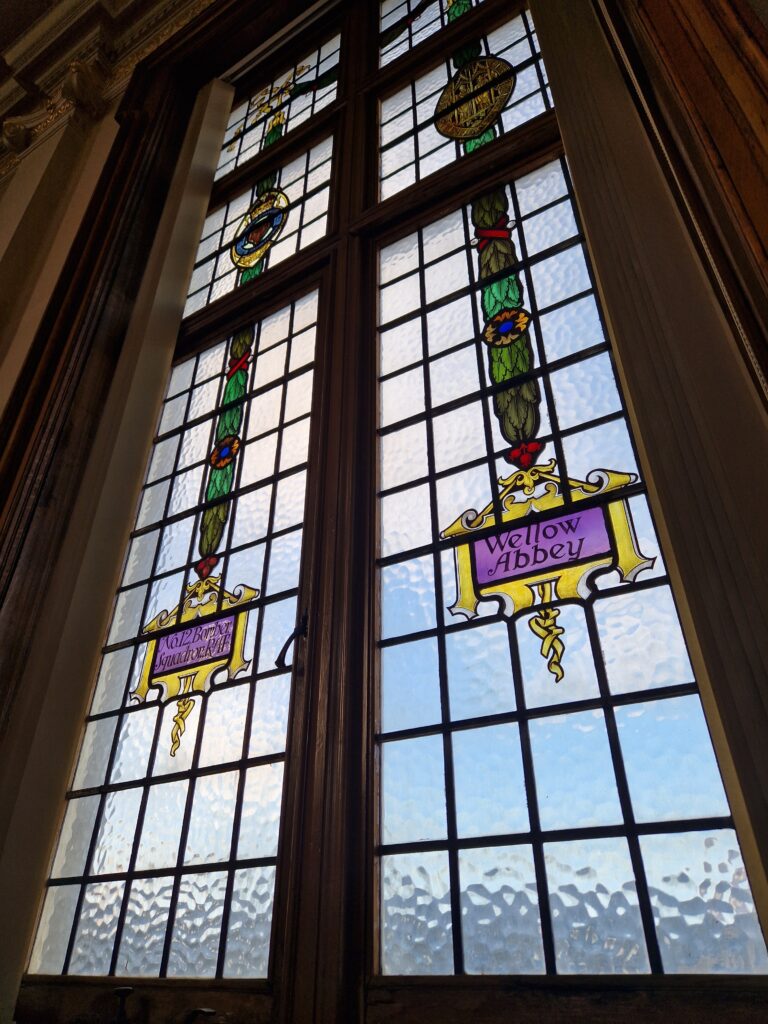
- St Michael, Little Coates – Starting life as a parish of Grimsby, it was broken up as part of the 1201 charter. Fishermen would often visit it to dry their nets and was later incorporated into Grimsby itself in 1928.
- Grimsby, Ontario – This window is a reference to the links to the Canadian town of the same name. Many towns in this part of Ontario are named after towns in Lincolnshire and there is even a block and gavel gifted from our town to be used at the Canadian town’s Council meetings.
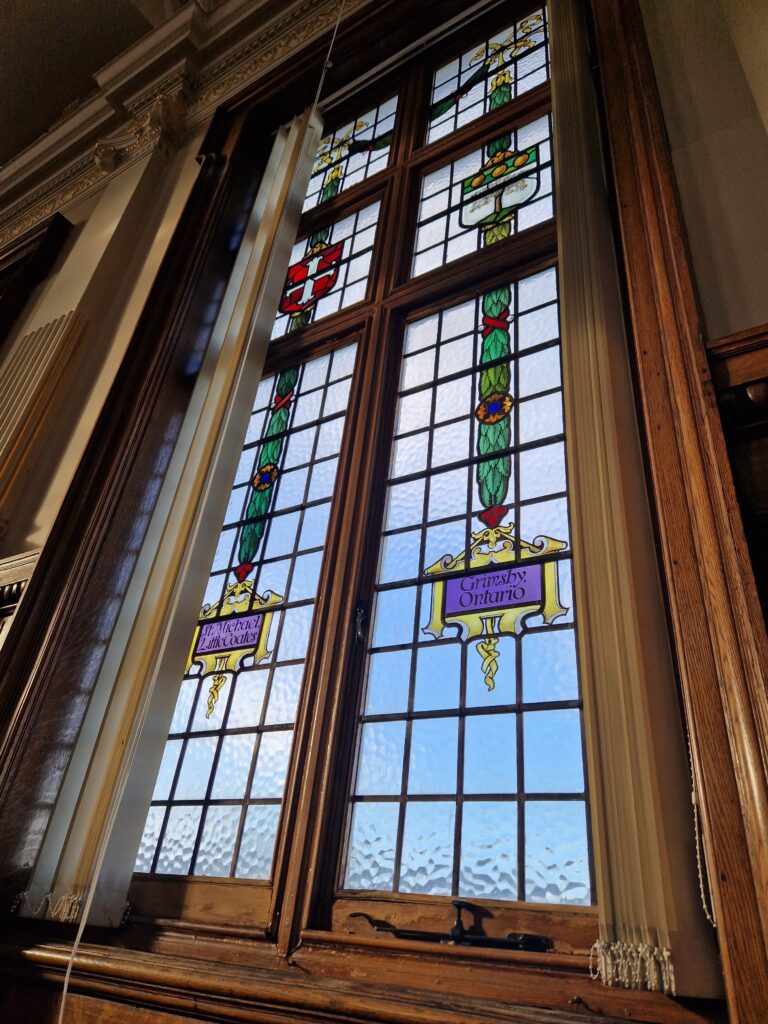
- Sidney Sussex College, Cambridge – The college owned a large part of Cleethorpes with the window art used to represent the parish of Cleethorpes.
- Jesus College, Oxford – The college are the patrons of Scartho, which was incorporated into Grimsby in 1928.
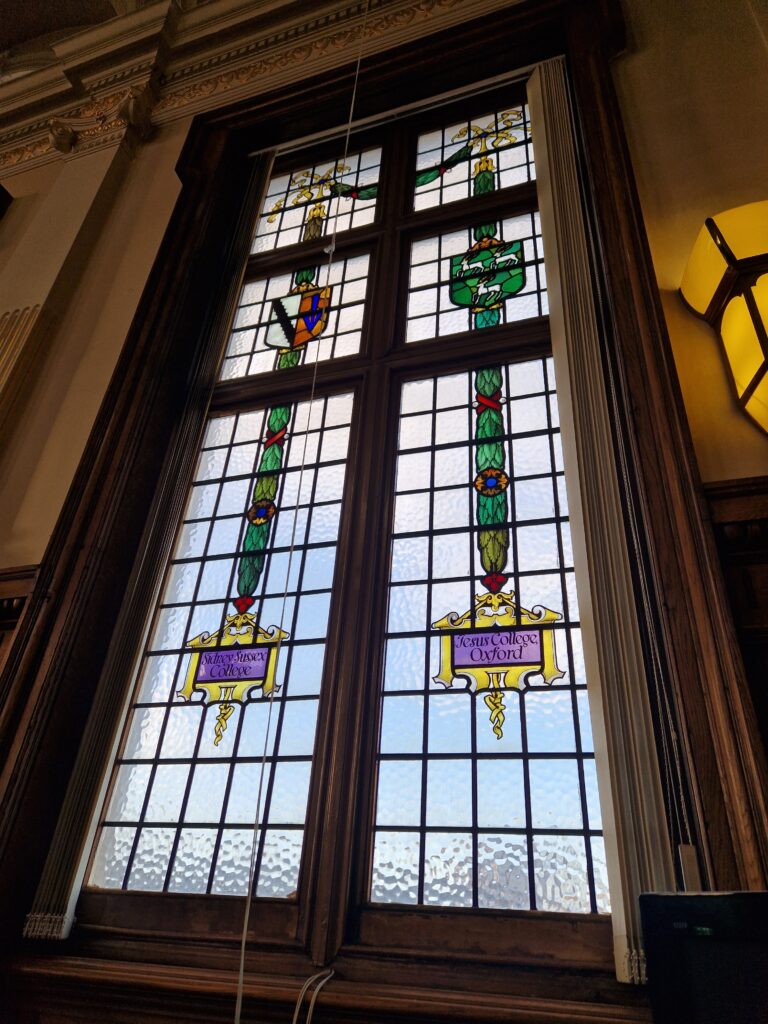
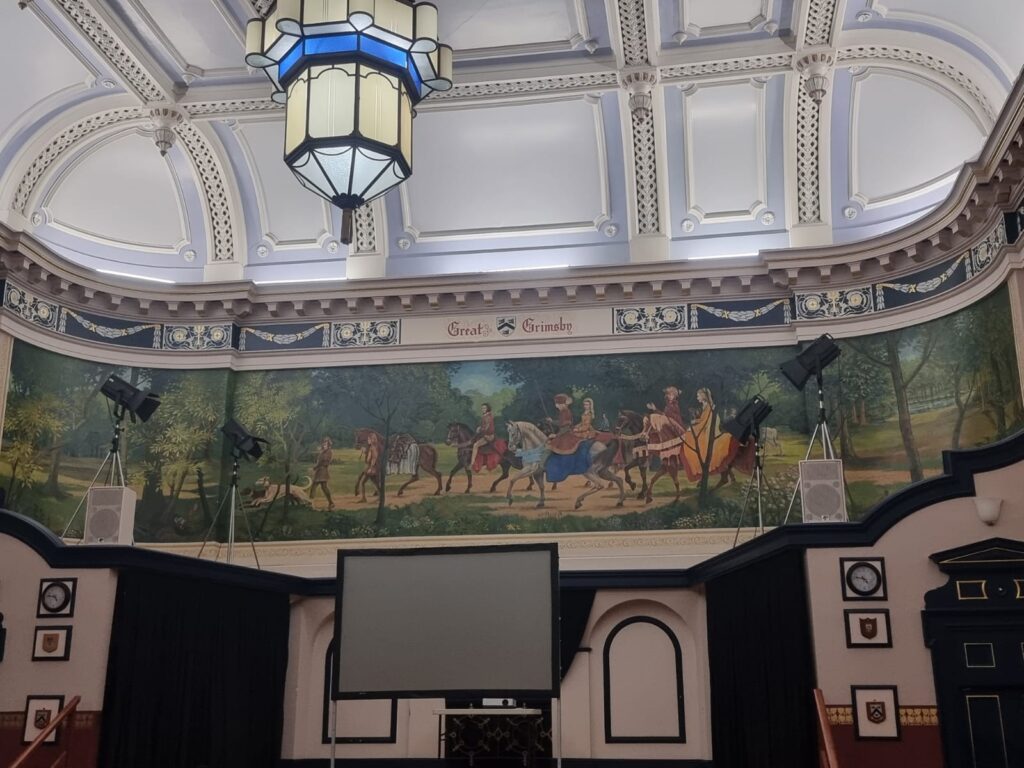
Share this article